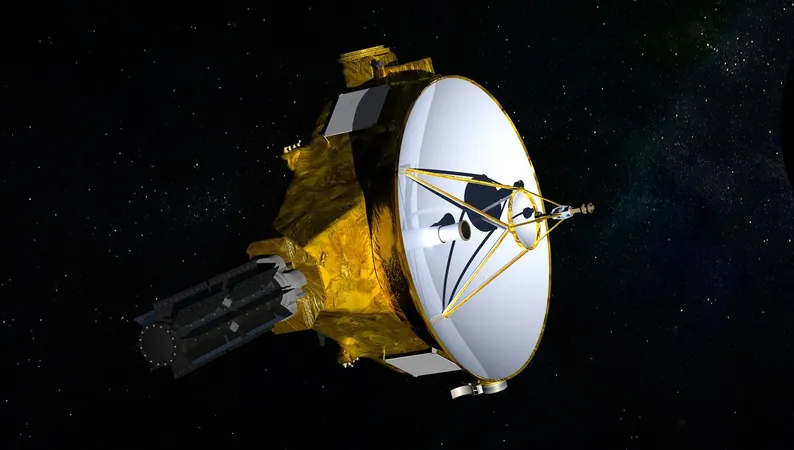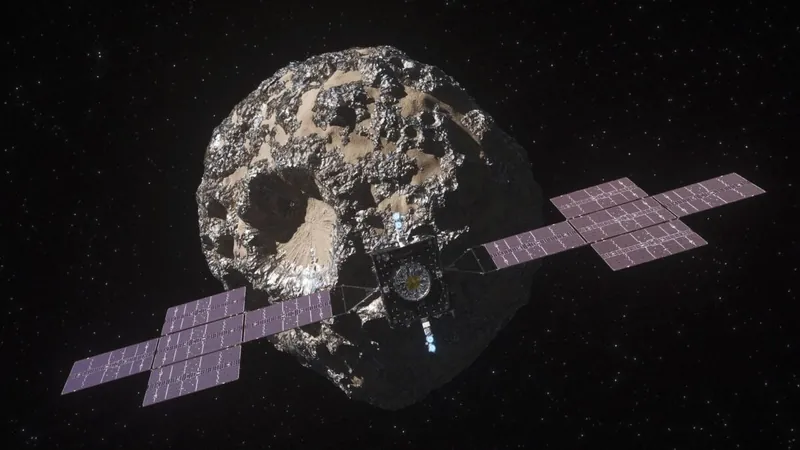
Groundbreaking Navigation Technique Tested on Craft 9 Billion Kilometers Away!
2025-07-01
Author: Wei
NASA's New Horizons Pushes the Boundaries of Space Exploration
NASA's New Horizons spacecraft is making headlines again as it ventures farther than any probe before, now an astonishing 9.1 billion kilometers (5.6 billion miles) from Earth. Having previously flown past Pluto in July 2015 and the Kuiper Belt Object Arrokoth in 2019, this pioneering mission is pushing the limits of our understanding of cosmic navigation.
Stellar Navigation with a Twist!
At this staggering distance, the alignment of nearby stars like Proxima Centauri and Wolf 359 has visibly altered from New Horizons' vantage point. Lead researcher Tod Lauer from NOIR Lab shared exciting insights on BlueSky, stating, "New Horizons has reached such a remote location that we can determine our position by observing the apparent shift of stars. This technique holds immense potential for future interstellar journeys."
Harnessing Parallax for Precision Tracking
The method exploited here is known as parallax, where an object’s position changes based on the observer's location. Historically, parallax has been a cornerstone of astronomical measurement—allowing us to gauge the distance to stars by comparing their positions from different points in Earth's orbit.
While the nearest star, Proxima Centauri, is about 4 light-years away, the New Horizons team captured images of Proxima and Wolf 359 using their Long Range Reconnaissance Imager (LORRI)—a camera initially designed for high-resolution imaging rather than navigation.
Mapping the Stars with Cutting-Edge Technology
Combining New Horizons' stellar imagery with data from the European Space Agency’s Gaia observatory, the team pinpointed the spacecraft's location with a surprising uncertainty of just 40 million kilometers (25 million miles). While that might sound coarse for earthly navigation, it’s a remarkable achievement for a craft situated 60 times farther from the Sun than our planet.
Looking Ahead: The Future of Deep Space Navigation
Lauer expressed optimism about the future: "Although this technique offers us a margin of error that’s acceptable for LORRI, upcoming deep space missions with advanced navigation systems can harness this method to achieve even greater accuracy."
Alan Stern, principal investigator for New Horizons, added, "This pioneering demonstration reinforces the potential of onboard imaging systems to navigate amidst the stars. While not as precise as Earth-based tracking, this method is a game-changer for deep space exploration and could pave the way for future missions venturing into interstellar space."
A New Era for Interstellar Travel?
As New Horizons continues its journey, this groundbreaking navigation technique could revolutionize how we explore the cosmos, offering a beacon of hope for humanity's future as we aim for the stars.



 Brasil (PT)
Brasil (PT)
 Canada (EN)
Canada (EN)
 Chile (ES)
Chile (ES)
 Česko (CS)
Česko (CS)
 대한민국 (KO)
대한민국 (KO)
 España (ES)
España (ES)
 France (FR)
France (FR)
 Hong Kong (EN)
Hong Kong (EN)
 Italia (IT)
Italia (IT)
 日本 (JA)
日本 (JA)
 Magyarország (HU)
Magyarország (HU)
 Norge (NO)
Norge (NO)
 Polska (PL)
Polska (PL)
 Schweiz (DE)
Schweiz (DE)
 Singapore (EN)
Singapore (EN)
 Sverige (SV)
Sverige (SV)
 Suomi (FI)
Suomi (FI)
 Türkiye (TR)
Türkiye (TR)
 الإمارات العربية المتحدة (AR)
الإمارات العربية المتحدة (AR)